Comments / Questions (31)
![]() Alejandra Hernández Godínez wrote:
Alejandra Hernández Godínez wrote:
I don\'t know why does appear the graph of a sweater in the bottom of the graphs of the hat\r\nAnother question: how many I make size 18 months?
09.07.2025 - 01:30DROPS Design answered:
Hi Alejandra, please change your device or browser, the graph will show off. 2nd question: do you mean how many balls? Hat 50 g (1 ball) for all sizes, colour no 18, red and 50 colour no 47, dark olive od DROPS Karisma. Sweater: 4 balls of DROPS Vienna (or another yarns from Group D). Mittens: 1 ball of DROPS Karisma. Happy knitting!
09.07.2025 - 07:50
![]() Charlotta wrote:
Charlotta wrote:
Stämmer det att jordgubbsmössan ska vara Karisma mörk oliv nr 47? den heter "skogsgrön" och ser mer grönare och ljusare ut än på bilden. Nr 57 heter mörk oliv
23.06.2025 - 12:48DROPS Design answered:
Hei Charlotta. Fargenavn kan forandres seg i løpet av årene vi har holdt på, men fargenr skal være det samme alltid. Til denne luen er det brukt farge nr. 47 og da den ble publisert het fargen mørk oliven, men nå heter fargen skogsgrønn. mvh DROPS Design
23.06.2025 - 13:44
![]() Irene wrote:
Irene wrote:
Jeg har strikket en anden jordbær hue opskrift af jeres hvor man gentager M2 2 gange før indtagninger, skal man ikke dette i den her? Det ligner det på billederne men syntes ikke det står i opskriften. Vh
09.05.2025 - 22:09DROPS Design answered:
Hei Irene. Du strikkes M.2 til arbeidet måler 7-8-9-10-12 cm. Om M.2 gjentas 1 eller 2 ganger avhengig av hvilken str du strikker. Ta gjerne en titt på de andre jordbærluene vi har (DROPS Baby 21-20 og 10-26). mvh DROPS Design
19.05.2025 - 11:13
![]() Carla Riemer wrote:
Carla Riemer wrote:
Ich möchte die Erdbeermütze stricken. Was passiert mit dem grünen Faden bei Diagramm 1, der liegt ja lose hinter dem Strickteil??
21.02.2025 - 16:34DROPS Design answered:
Liebe Frau Riemer, ja genau, wenn es zuviele Maschen gibt, dann kann man auch die Fäden bei der Rückseite verkreuzen, immer beachten, daß die Fäden nicht zu fest sind. Viel Spaß beim Stricken!
24.02.2025 - 07:27
![]() Mariaelena wrote:
Mariaelena wrote:
Vorrei sapere come adattare il modello per una circonferenza di 56cm (adulto) Grazie
08.08.2024 - 15:22DROPS Design answered:
Buonasera Mariaelena, purtroppo non ci è possibile adattare i modelli alle singole richieste, ma sul nostro sito può trovare tantissimi modelli di berretti per adulti. Buon lavoro!
09.08.2024 - 21:22
![]() Tonya Stuart-Hill wrote:
Tonya Stuart-Hill wrote:
Hi Please can you explain why I need double pointed needles with this strawberry hat pattern. Thank you
03.02.2024 - 17:44DROPS Design answered:
Dear Tonya, please see answer below. Happy knitting!
04.02.2024 - 22:59
![]() Tonya Stuart-Hill wrote:
Tonya Stuart-Hill wrote:
Hi Please can you explain why I need double pointed needles with this strawberry hat pattern. Thank you
03.02.2024 - 17:43DROPS Design answered:
Dear Tonya, you use double pointed needles because you have a small number of stitches, so they will be more confortable than circular needles. You could also work with 2 circular needles of the same size or using the magic loop technique, as shown here: https://www.garnstudio.com/video.php?id=120&lang=en. Happy knitting!
04.02.2024 - 22:58
![]() Sonja Findt- Rossner wrote:
Sonja Findt- Rossner wrote:
Ich kann leider die Wolle, die für diesen Pullover vorgeschlagen wird nicht finden: Vienna??
19.12.2023 - 17:42DROPS Design answered:
Liebe Frau Finde-Rossner, diese Wolle ist jetzt ausgelaufen, benutzen Sie unseren Garnumrechner um die Alternative sowie die passende Garnmenge zu finden. Viel Spaß beim stricken!
20.12.2023 - 07:49
![]() Suzy wrote:
Suzy wrote:
Bonjour, je tente de tricoter le modèle Berry Baby. Cependant, je ne suis pas certaine de comprendre les diminutions pour les manches. Lorsque vous dites à 34 cm rabattre… et 2 mailles jusqu’à ce que la manche mesure 40 cm. Est ce deux mailles de chaque côte ou une de chaque côté. Combien devrait il me rester de mailles lorsque j’aurai fini ma manche? Merci.\\r\\nColette
29.11.2023 - 20:02DROPS Design answered:
Bonjour Suzy, vous rabattez 2 mailles de chaque côté jusqu'à ce que la manche mesure 40 cm de hauteur totale, ajustez pour que vous ayez rabattu le même nombre de fois 2 mailles sur l'endroit et sur l'envers pour la manche soit symétrique, puis rabattez 3 mailles de chaque côté et rabattez les mailles restantes. Le nombre de mailles restant va dépendre de votre tension en hauteur, ce qui est important ici c'est la hauteur en cm et pas la largeur en nombre de mailles. Bon tricot!
30.11.2023 - 10:10
![]() Ricchan wrote:
Ricchan wrote:
Piirros puuttuu?
23.09.2023 - 10:30
Berry Baby#berrybabyhat |
||||||||||
 |
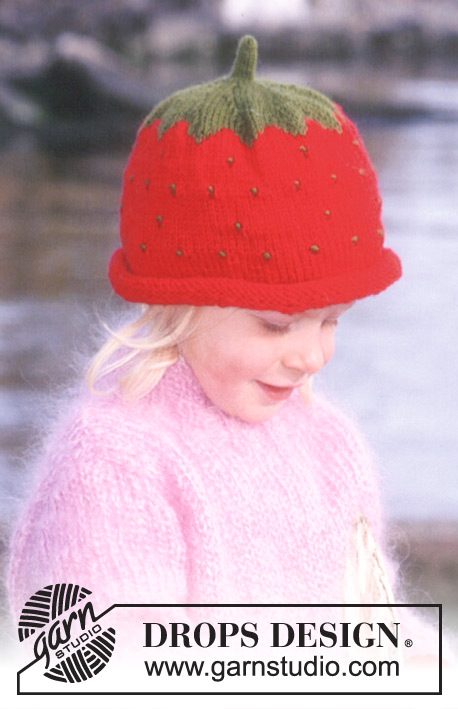 |
|||||||||
Knitted strawberry hat in DROPS Karisma Superwash size 1/6 month–8 years. Jumper in DROPS Vienna size 2–8 years and Mittens in DROPS Karisma size 2-8 years.
DROPS Baby 10-23 |
||||||||||
|
STRAWBERRY HAT Pattern: See diagrams M.2 and M.3. 1 diagram = 1 pattern repeat. The diagram is seen from the RS Cast on 84-90-96-102-108 sts with red on double pointed needle size 3.5 mm. P 1 round and continue in stocking st. When piece measures 6 cm insert a marker (= rolling edge) and measure piece from this point onwards. Knit M.2. When piece measures 7-8-9-10-11 cm dec 3-0-6-3-0 sts evenly = 81-90-90-99-108 sts. Now insert 9-10-10-11-12 markers in piece with 9 sts between each marker. First st after the first marker = first st in M.3. After M.3 finish the hat in olive green, at the same time dec 1 st to the right of all markers on every other round until there are 9-10-10-11-12 sts left on needle. Change to needle size 2 mm and knit 3 cm in the round over all sts. Cut the thread and pull through remaining sts. Sew tight. JUMPER: Rib: *K2, P2*, repeat from *-*. Garter sts, back and forth: Knit all rows. Front piece: Cast on 54-58-62-62 sts (incl 1 edge st each side) on needle size 5 mm with Vienna and knit 6 cm Rib with 1 edge st each side in garter sts. Change to needle size 6 mm and continue in stocking sts, at the same time dec 2 sts in the 3 smaller sizes = 52-56-60-62 sts. Remember the knitting tension! When piece measures 24-25-27-29 cm cast off for armhole each side on every other row: 3 sts 1 time, 2 sts 1 time and 1 st 3-2-3-2 times = 36-42-44-48 sts. When piece measures 31-34-36-40 cm cast off the middle 8-10-10-12 sts for neck and dec to shape the neckline on every other row: 2 sts 1 time and 1 st 3 times = 9-11-12-13 sts left on each shoulder. Cast off when piece measures 37-40-43-47 cm. Back piece: Cast on and knit as front piece. Cast off for armhole as described for front piece and continue until piece measures 35-38-41-45 cm. Now cast off the middle 16-18-18-20 sts for neck and dec 1 st on neckline on next row = 9-11-12-13 sts left on each shoulder. Cast off when piece measures 37-40-43-47 cm. Sleeve: Cast on 30-30-30-34 sts (incl 1 edge st each side) on needle size 5 mm with Vienna and knit 6 cm Rib with 1 edge st each side in garter sts. Change to needle size 6 mm and knit stocking sts, at the same time inc 1 st each side a total of 3-6-7-8 times on every 9-4-4-3.5 cm = 36-42-44-50 sts. When sleeve measures 26-29-34-37 cm cast off for sleeve cap each side on every other row as follows: 3 sts1 time, 2 sts 0-1-1-2 times, 1 st 3-1-0-0 times, 2 sts until piece measures 31-35-40-43 cm and 3 sts each side until piece measures 33-36-41-44 cm. Cast of remaining sts. Assembly: Sew right shoulder seam. Pick up approx 50-58 sts (divisible by 4 + 2) round the neck on needle size 5 mm with Vienna – begin at left shoulder. Knit 6 cm Rib with 1 edge st each side in garter sts. Cast off. Sew left shoulder seam and up along the neck. Set in sleeves and sew side and sleeve seams inside 1 edge st. MITTENS: Rib: *K1/P1*, repeat from *-*. Cast on 44-48-54 sts on needles size 2.5 mm and knit 10-12-14 cm Rib. Change to needle size 3 mm and continue in stocking st, at the same time dec 8 sts evenly = 36-40-46 sts. Measure piece from this point onwards. When piece measures 1 cm inc for thumb as follows: insert a marking thread, inc 1 st by knitting 2 sts in next st, K1, inc 1 st by knitting 2 sts in next st, insert a marking thread, finish the round. Now inc 1 st on the inner side of each MT on every other round a total of 3-4-5 times = 11-13-15 thumb sts. When piece measures 3-4-5 cm put the 11-13-15 thumb sts on a thread. Cast on 3 new sts behind the thumb sts = 36-40-46 sts. Continue in stocking sts. When piece measures 5-7-9 cm knit next round as follows: 14-15-18 sts (= upper hand), put 8-10-10 sts on a thread for little finger, knit 14-15-18 sts (= palm of hand). Now knit the fingers on needle size 2.5 mm Little finger: put the 8-10-10 sts from thread back on needle and cast on 3 new sts towards ring finger = 11-13-13 sts. Knit 3-3.5-4 cm in stocking st, knit all sts tog 2 by 2, cut the thread and pull through remaining sts. Ring finger: Take 4-5-5 sts from upper hand sts and 4-4-6 sts from palm sts, pick up 3 new sts towards little finger and cast on 2 new sts towards middle finger = 13-14-16 sts. Knit 5-6-7 cm stocking sts, knit all sts tog 2 by 2, cut the thread and pull through remaining sts. Middle finger: Take 5-5-6 sts from upper hand sts and 4-5-6 sts from palm sts, pick up 3 new sts towards ring finger and cast on 2 new sts towards index finger = 14-15-17 sts. Knit 6-7-8 cm stocking sts, knit all sts tog 2 by 2, cut the thread and pull through remaining sts. Index finger: Take remaining sts from upper hand and palm sts and pick up 3 new sts towards middle finger = 14-14-16 sts. Knit 5-6-7 cm stocking sts, knit all sts tog 2 by 2, cut the thread and pull through remaining sts. Thumb: Put the 11-13-15 thumb sts from thread on needle and pick up 3 sts behind these = 14-16-18 sts. Knit 3-4-5 cm stocking sts, knit all sts tog 2 by 2, cut the thread and pull through remaining sts. |
||||||||||
Diagram explanations |
||||||||||
|
||||||||||
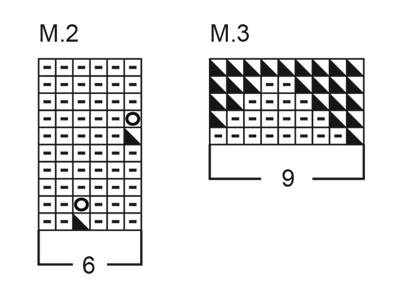
|
||||||||||
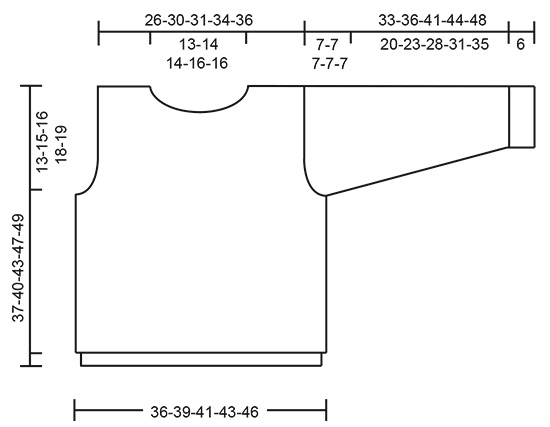
|
||||||||||
Have you finished this pattern?Tag your pictures with #dropspattern #berrybabyhat or submit them to the #dropsfan gallery. Do you need help with this pattern?You'll find 11 tutorial videos, a Comments/Questions area and more by visiting the pattern on garnstudio.com. © 1982-2025 DROPS Design A/S. We reserve all rights. This document, including all its sub-sections, has copyrights. Read more about what you can do with our patterns at the bottom of each pattern on our site. |
||||||||||









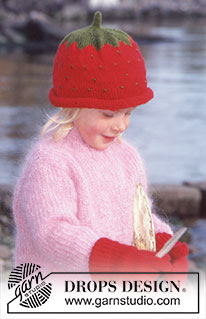
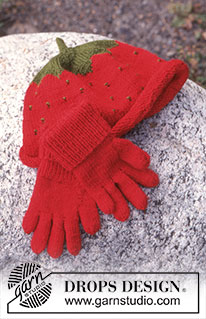

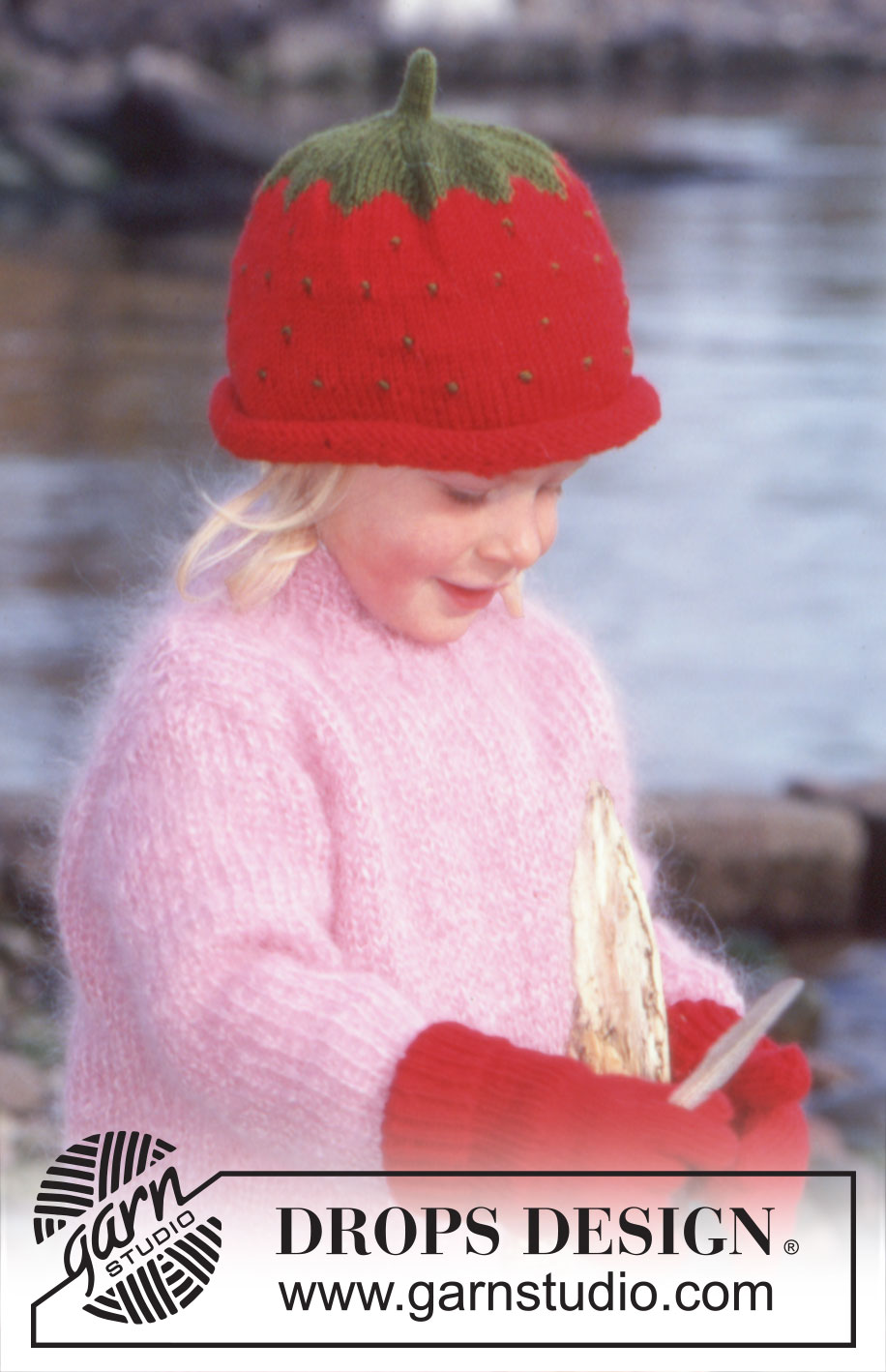
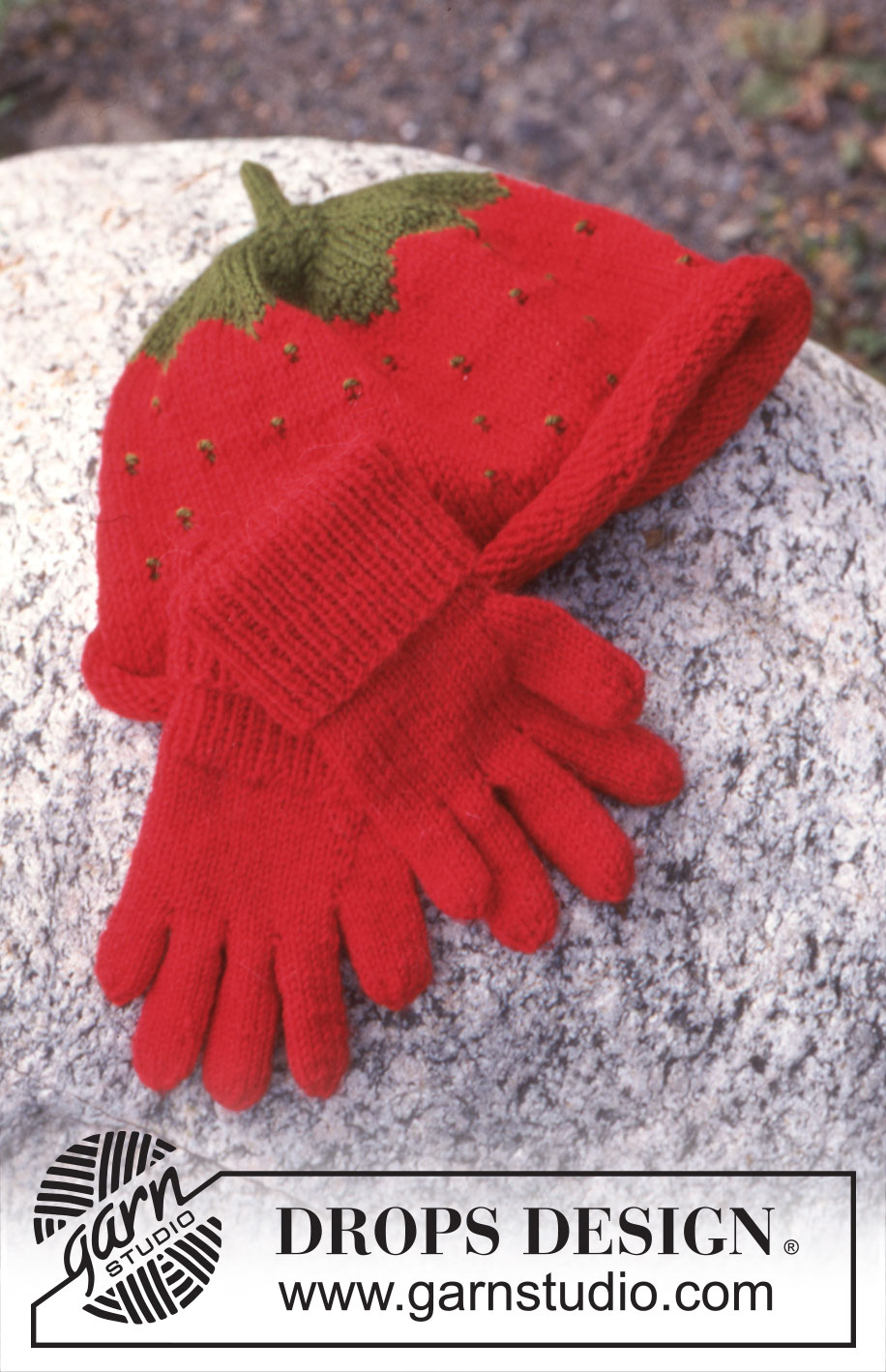




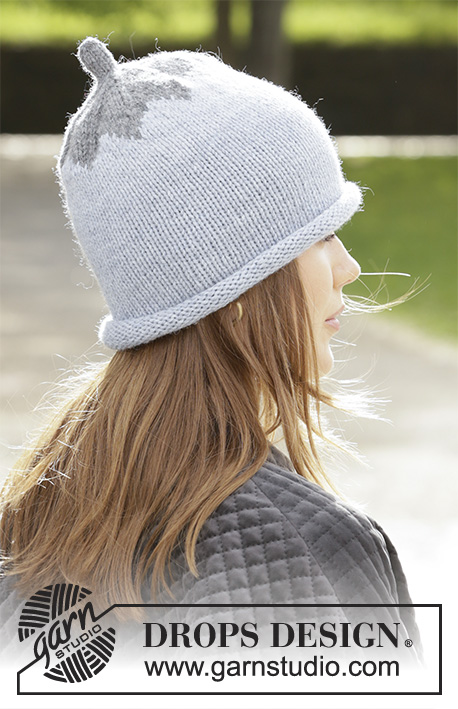


















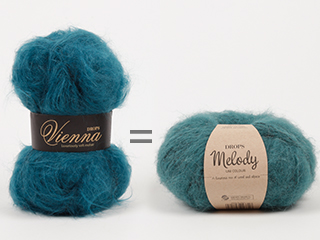




















Post a comment to pattern DROPS Baby 10-23
We would love to hear what you have to say about this pattern!
If you want to leave a question, please make sure you select the correct category in the form below, to speed up the answering process. Required fields are marked *.